The Plextor M8Pe (512GB) SSD Review
by Billy Tallis on December 14, 2016 9:00 AM ESTMixed Random Read/Write Performance
The mixed random I/O benchmark starts with a pure read test and gradually increases the proportion of writes, finishing with pure writes. The queue depth is 3 for the entire test and each subtest lasts for 3 minutes, for a total test duration of 18 minutes. As with the pure random write test, this test is restricted to a 16GB span of the drive, which is empty save for the 16GB test file.
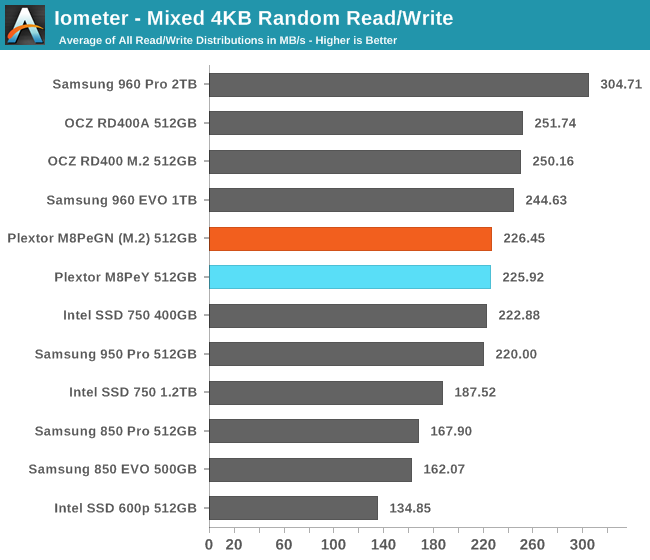
With a relatively low queue depth, this test is mostly about the access latency of the flash itself, and it's no surprise that the heatsink makes no difference to the M8Pe's performance. The M8Pe is slightly faster than the older Intel SSD 750 and Samsung 950 Pro, but is slower than the OCZ RD400 and Samsung 960 Pro.
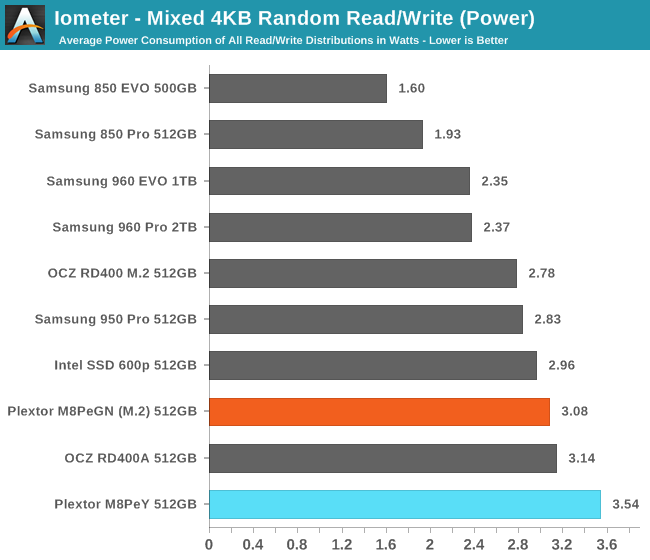
Power consumption is again higher than the competition, giving the M8Pe in either configuration a poor efficiency score.
 |
|||||||||
Performance increases relatively slowly as the proportion of writes increases; this is unsurprising given that we've already seen the M8Pe's strengths lie in its read speeds. The spike in performance in the final all-writes phase of the test is respectable and brings the average up to a typical score for this product segment.
Mixed Sequential Read/Write Performance
The mixed sequential access test covers the entire span of the drive and uses a queue depth of one. It starts with a pure read test and gradually increases the proportion of writes, finishing with pure writes. Each subtest lasts for 3 minutes, for a total test duration of 18 minutes. The drive is filled before the test starts.
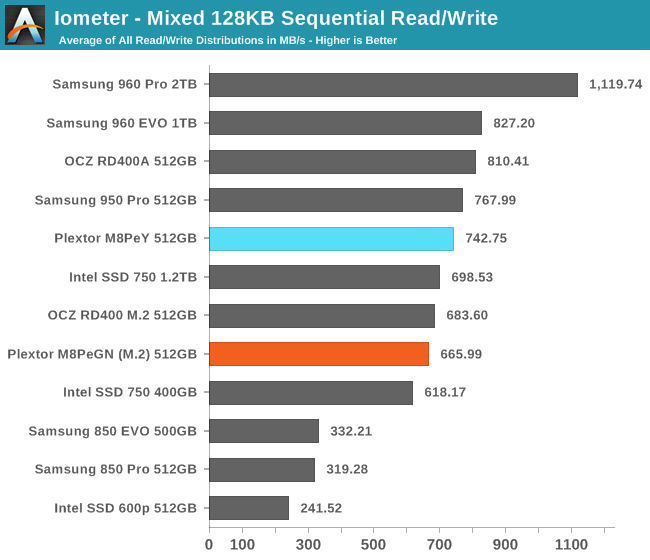
The data rates on the mixed sequential I/O test are high enough that thermal throttling becomes a factor, and the presence of a heatsink improves the M8Pe's average by 11%. Performance in either configuration is a bit sub-par for an MLC-based PCIe SSD, but it's still at least twice as fast as any SATA SSD.
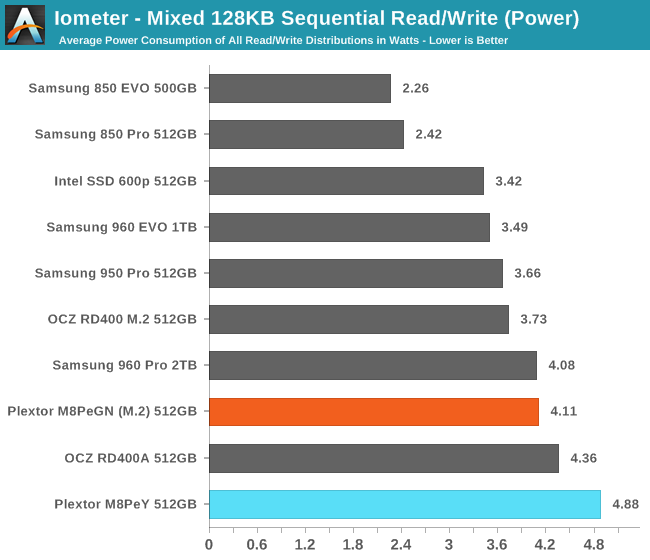
Power consumption is again the highest of any M.2 PCIe SSD, and efficiency isn't great.
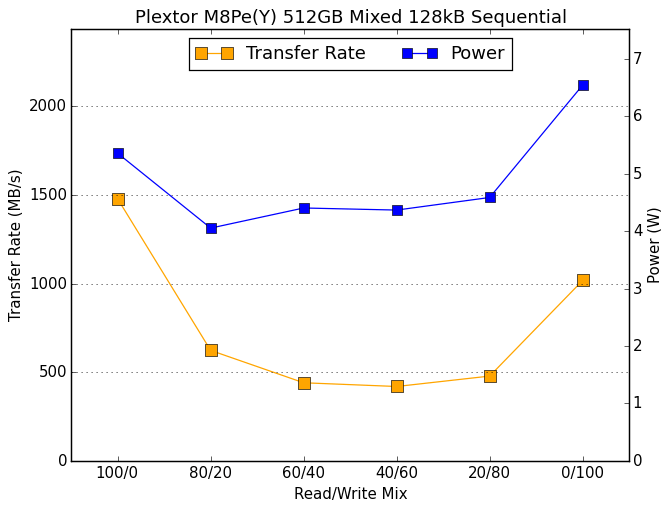 |
|||||||||
There appears to be a little bit of thermal throttling during the first phase of this test, but most of it occurs at the end when the workload is all writes.










64 Comments
View All Comments
The_Assimilator - Wednesday, December 14, 2016 - link
Conclusion page: the paragraph "The performance differences between the Plextor M8Pe and the Toshiba OCZ RD400..." is repeated. BRO DO YOU EVEN EDITOR?Billy Tallis - Wednesday, December 14, 2016 - link
I think the problem may have been too much editor. My browser was getting really laggy and unresponsive while I was finishing up the article and rearranging things.Threnx - Friday, December 16, 2016 - link
Whoa there are still readers here? hah, I was cleaning out my bookmarks and saw anandtech. You realize all the talent left ages ago right? This site is dead. They're just riding on the name now...cbrownx88 - Friday, December 16, 2016 - link
@Threnx - where do you go now since Anandtech is a shell of its former glory?TemjinGold - Wednesday, December 14, 2016 - link
So... it basically loses across the board to the EVO but they want to charge more for it?Billy Tallis - Wednesday, December 14, 2016 - link
Keep in mind that the 960 EVO results here are for the 1TB model, and that kind of capacity advantage usually brings some performance advantage, too. But yeah, once the 960 EVO is actually shipping in volume, a lot of prices will probably have to come down. Unless the 960 EVO price goes up.close - Wednesday, December 14, 2016 - link
Prices for Samsung SSDs are rising due to the NAND shortage. If Plextor manages to resist this trend they might do well. After all most current workloads don't need anywhere near that kind of level of performance so a slight performance disadvantage is tolerable as long as it's reflected in the price.BrokenCrayons - Wednesday, December 14, 2016 - link
I wasn't aware of a NAND shortage. Do you happen to know the cause?Samus - Wednesday, December 14, 2016 - link
It's simply a supply and demand issue. Other causes are manufacturing process adjustments and lower yield issues often associated with transitioning to new processes.However, the shortage isn't as dire as 'close' makes it seem. Drive prices aren't necessarily increasing because of the shortage, but they aren't falling as they should be with the density improvements associated with TLC and widespread adoption of 3D VNAND. Samsung drives are increasing in price because vendors have noticed sharper demand for them than other drive, and I'm sure you can guess why based on this article alone...I'm not a Samsung fan, but they are currently the most balanced SSD products on the consumer market.
BrokenCrayons - Wednesday, December 14, 2016 - link
Ah that makes sense. Thanks!